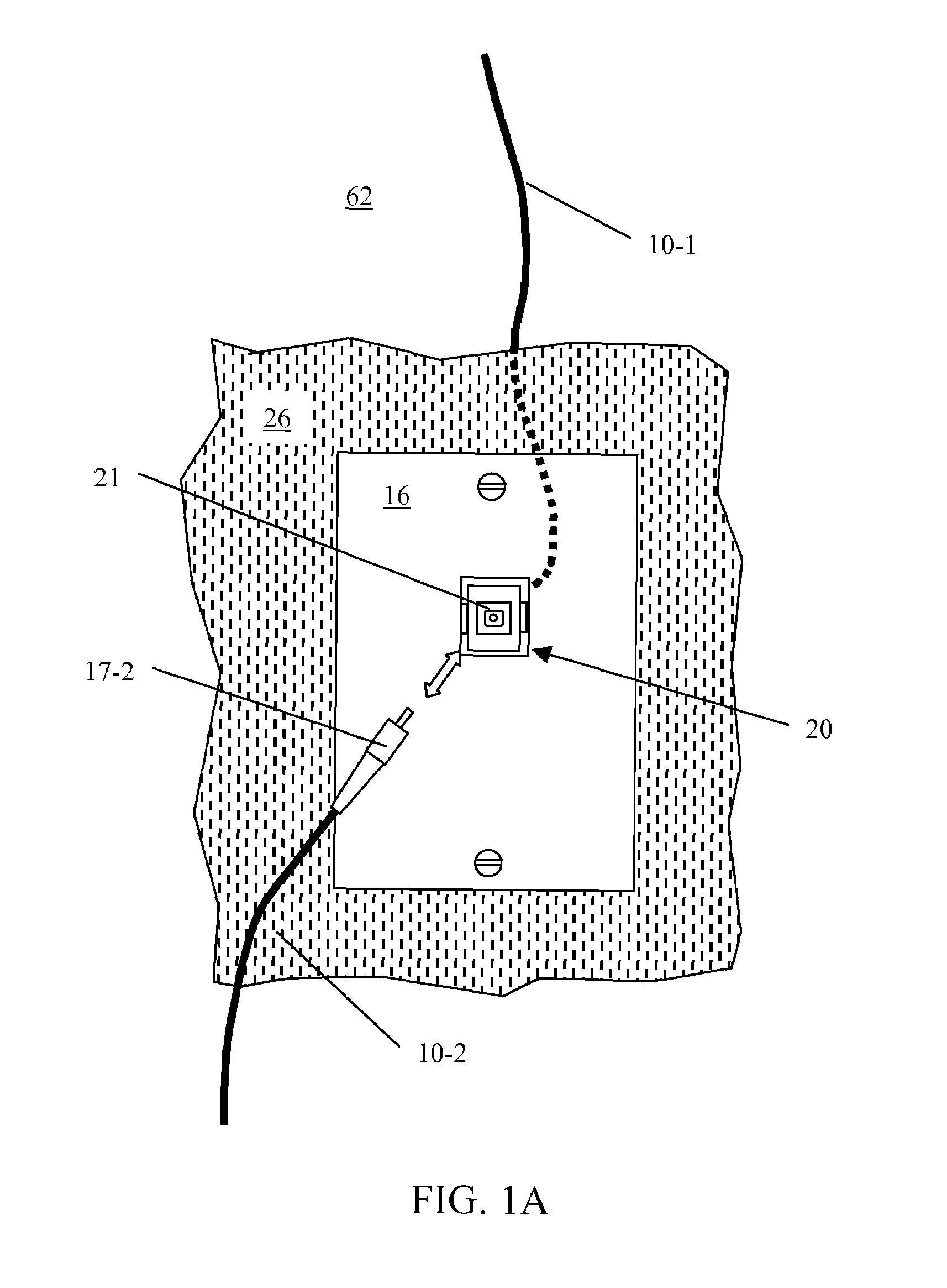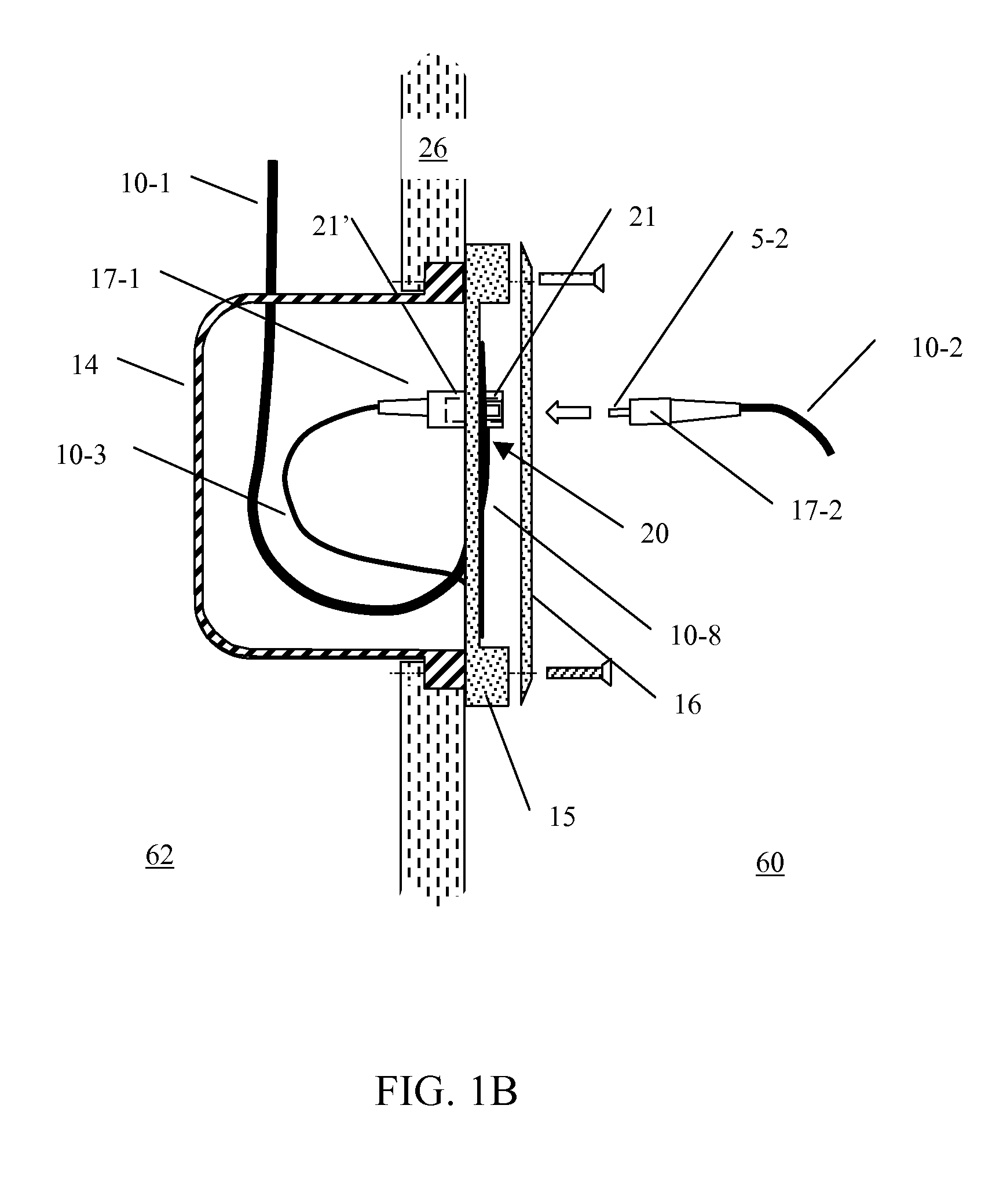Protective fiber optic union adapters
a fiber optic union and adapter technology, applied in the field of optical systems, can solve the problems of affecting the performance of the network, so as to reduce the potential for damage, and reduce the loss of insertion
- Summary
- Abstract
- Description
- Claims
- Application Information
AI Technical Summary
Benefits of technology
Problems solved by technology
Method used
Image
Examples
example
Optical Signal Processor with Replaceable Receptacles
[0043]In a particular example, the male-to-female isolating union adapters are used to isolate the fiber optic ports of an optical signal processor. More specifically, the optical signal processor may be in the form of a duplex fiber optic transceiver module, an example of which is illustrated in FIGS. 7A and 7B. This module may be transmit optical Ethernet-formated data at rates up to 10 Gbit / sec and include electrical signal conversion or communication. The transceiver module 33 is packaged within a housing 32 and includes integrated duplex, female-type fiber optic receptacles 31. In FIG. 7 these receptacles 31 are of the SC-UPC type with either multi-mode or single mode fiber interfaces, for example, and with alignment channels 35. Alternate receptacle types include LC, ST and MTRJ. Damage to the internal fiber interfaces within receptacle 31 is difficult or impractical to repair. To protect this interface from damage, this tra...
PUM
 Login to View More
Login to View More Abstract
Description
Claims
Application Information
 Login to View More
Login to View More - R&D
- Intellectual Property
- Life Sciences
- Materials
- Tech Scout
- Unparalleled Data Quality
- Higher Quality Content
- 60% Fewer Hallucinations
Browse by: Latest US Patents, China's latest patents, Technical Efficacy Thesaurus, Application Domain, Technology Topic, Popular Technical Reports.
© 2025 PatSnap. All rights reserved.Legal|Privacy policy|Modern Slavery Act Transparency Statement|Sitemap|About US| Contact US: help@patsnap.com



